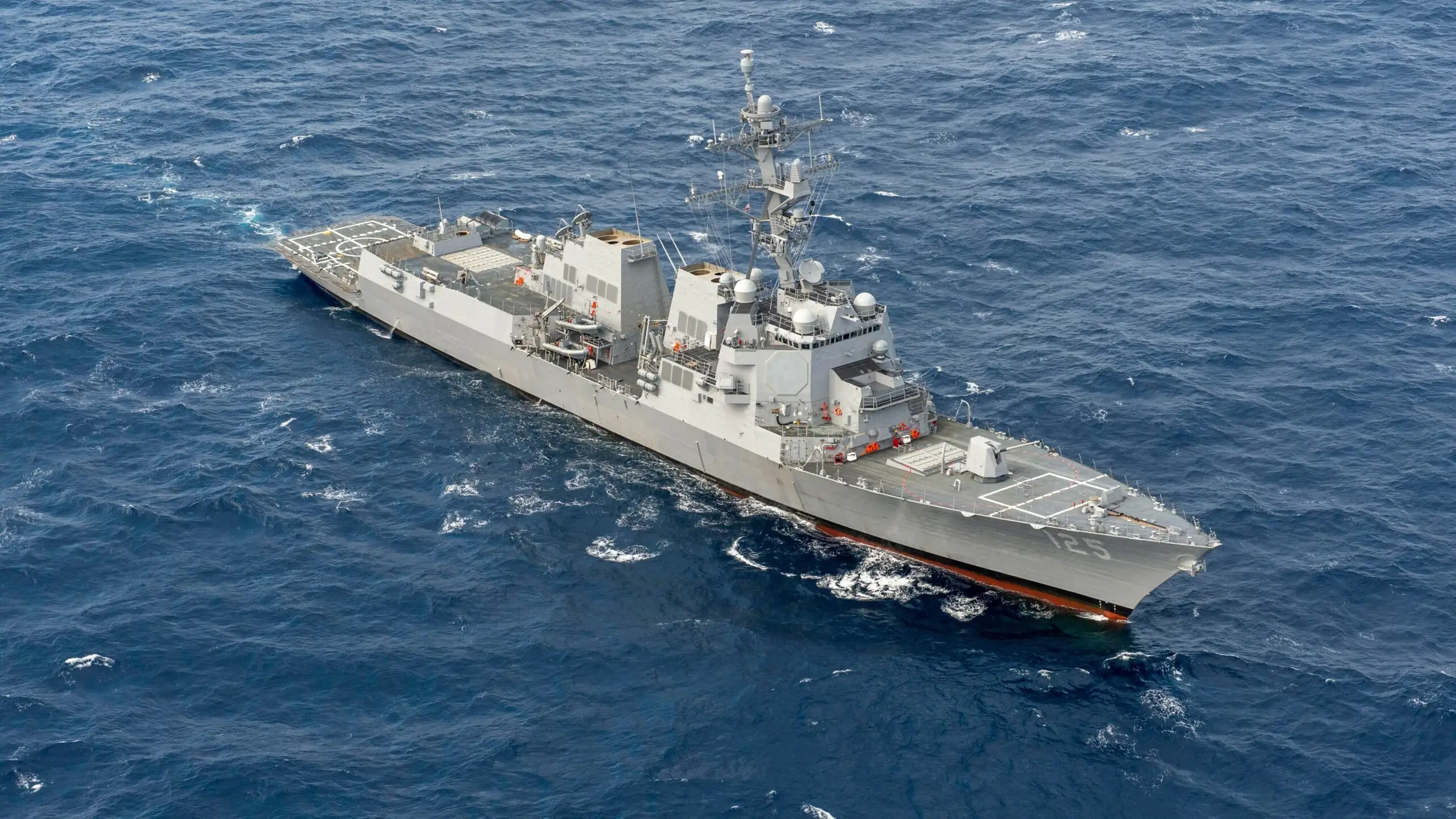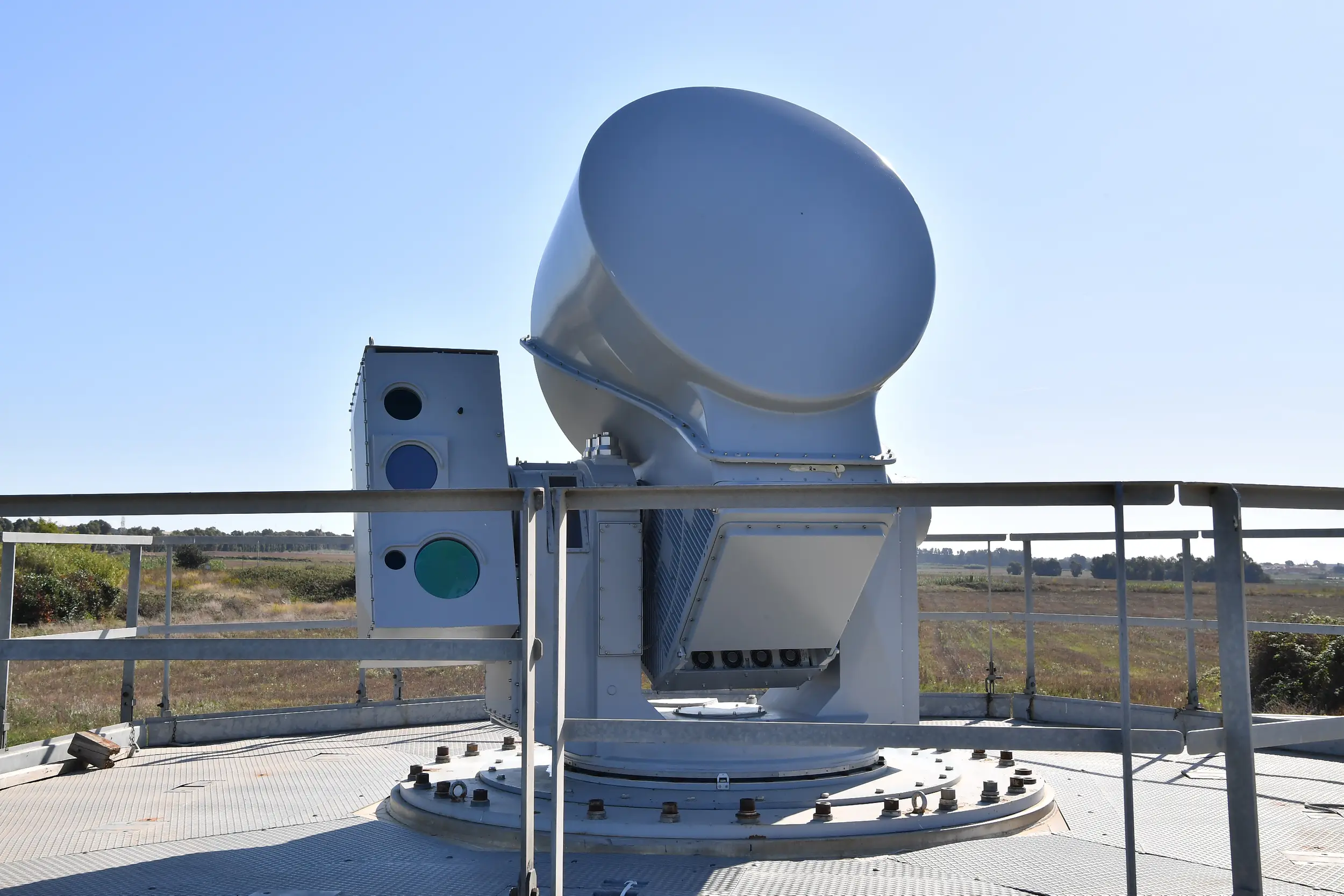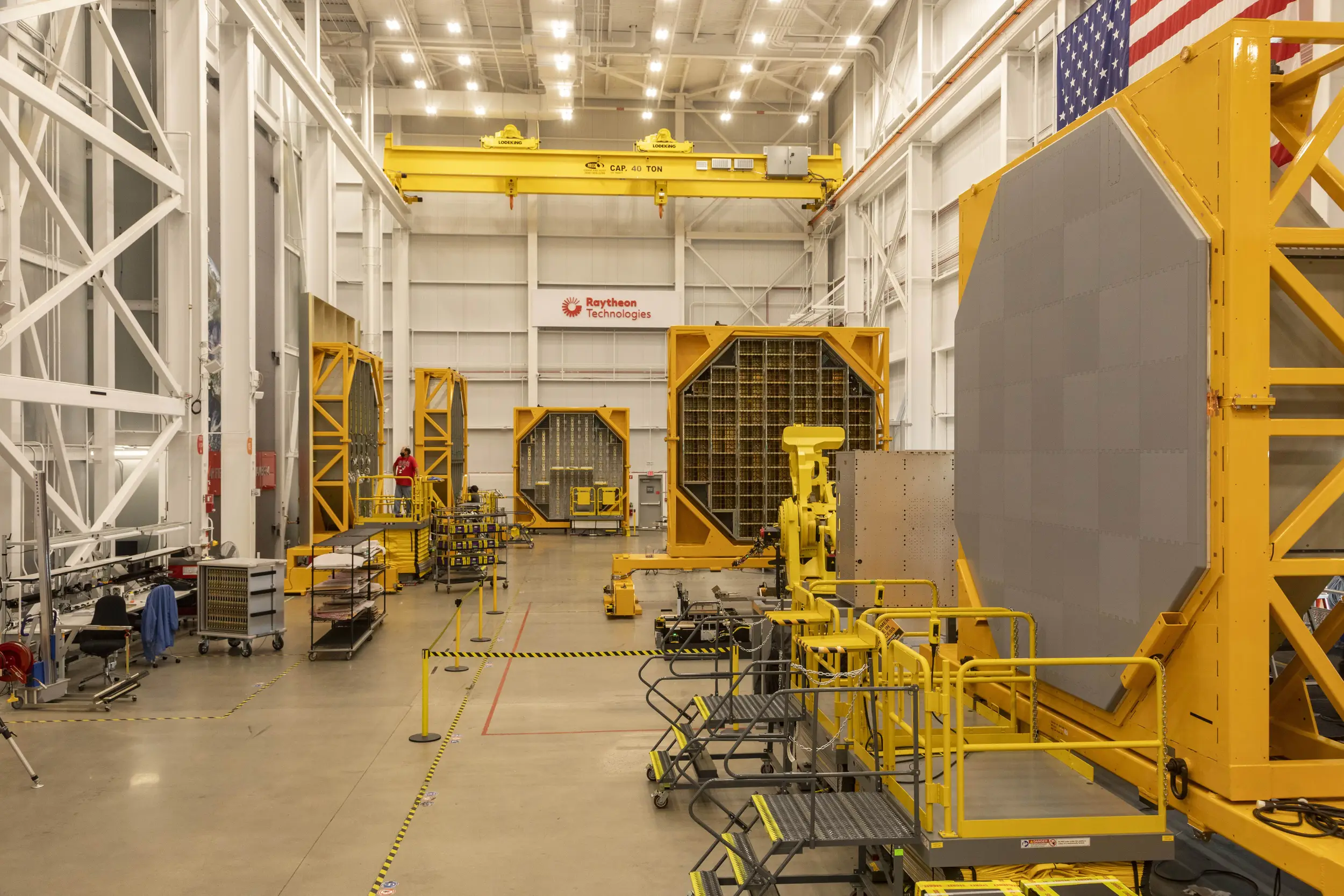
REPORT HOME > In the Loop
June 2023 | technology report | Radar & EW
Facing challenges such as the threat of jamming and the need to operate in poor weather at extended ranges, radar developers are harnessing new materials technology and the power of AI to stay ahead of the curve.
Above: The USS Jack H Lucas will be the first US destroyer to integrate the SPY-6 family of radars. (Photo: Raytheon Technologies)
Fire control systems (FCS) are a vital focus for all navies, with radar playing a crucial role within the broader architecture, with its precise use depending on the ship and weapon system in question.
However industry and naval experts point to a range of evolutions in the technology that underpins systems today, as well as the potential for further development in areas such as artificial intelligence (AI).
A Leonardo spokesperson said that a fire control radar must be seen as one part of a wider system. This means that information from other sources – such as EO/IR sensors – could be used in conjunction with radar. Thanks to this broad-based approach, the wider system can still be used even in poor atmospheric conditions.
‘In addition to this, the adoption of dual-band radar assures the correct functioning and full performance under multipath conditions (ie in the presence of unwanted reflections from the sea surface), thanks to the very narrow beamwidth of the Ka-band sensor,’ they said.
‘The new fire control radars are also ready to transmit large-bandwidth signals, assuring enhanced range resolution performance.’
The main evolution is the development of a dual-band radar, capable of operating contemporaneously with X- and Ka-band frequencies, said the spokesperson. New FCS are also focused on developing ways to avoid jamming, ensuring a firing chain is always available.
Solid State
There have also been evolutions for radar antennas in solid state technology, similar to those found in surveillance radar, while ‘the integration of AI-based architectures, mainly for video tracking and data fusion, are a very challenging and recent evolution’, the Leonardo spokesperson said.
Such enhancements, when combined with developments in electronics, make it possible to increase the range of fire control radars, including adding over-the-horizon detection, the spokesperson explained. This also helps to improve the system accuracy needed for ammunition guidance, with other benefits including continuous fire tracking even in extremely difficult conditions.
‘New signal and data processing architectures require the development of new hardware platforms to manage computational load and storage of a large amount of data,’ the spokesperson added.
Fire control radars face potential risks from threats including electronic warfare (EW). The major risk is the possibility of jamming the X-band, said the Leonardo spokesperson, adding that the company is ‘currently studying different solutions for both single- and dual-band fire control radars for reducing or avoiding this threat’.
The major technological evolution in recent years has been the development of solid-state and active electronically scanned array (AESA) radars, said Don Schmieley, Raytheon’s requirements and capabilities lead for the USN’s SPY-6 family of radars, which will ultimately perform air and missile defence on seven ship classes. It is designed to detect and help intercept threats such as ballistic or cruise missiles, surface ships and hostile aircraft.
Above: A naval fire control radar must be seen as part of a wider fire control system. Above is Leonardo's NA30s Mk II. (Photo: Leonardo)
AESA has lowered the production cost, Schmieley said, as well as improving efficiency, allowing for better beam control and tighter fire control loops.
‘These opportunities have allowed for commonality across radar variants, providing improvements in sustainment, logistics and training… AESA and digital beamforming have significantly improved the system clutter performance, allowing for better performance in near-land operations and in challenging weather conditions.’
He also pointed to the use of solid-state components in transmitters and computers. This has ‘allowed for increased radar performances, including greater processing, which improves sensitivity, discrimination, clutter processing and other capabilities’.
Mixed Bands
Saab’s work in the naval fire control area includes the Ceros 200 radar and optronic fire control director, which can operate as part of the company’s 9LV FCS alongside the EOS 500 EO sensor and other systems.
Johan Hägg, the company’s product manager for 9LV combat system solutions, highlighted the broad move of military radar into AESA territory with gallium nitride (GaN) technology. This shift is changing the performance of fire control radars more broadly, he said.
‘With this follows a line of improvements in signal processing, tracking, ECCM [electronic counter-countermeasures] and software-based enhancements. This in turn sees processing power growing, as in most systems, with large amounts of data generated by modern radar sensors,’ Hägg explained.
Looking forward, the potential for mixing different bands in one system might enable multiple uses for a naval radar, across surveillance, fire control and communication, said Hägg. However, ‘cost and space issues will probably mean that there will be a gap between major combatants and ships of lesser size or budget, [which will still need] to be capable of surviving in the threat environment of tomorrow.’
As with many subsystems, fire control radars will be increasingly software-driven in terms of technological development, said Hägg. ‘This will also drive IT security and the need to find the balance between IT and system performance on an ongoing basis.’
The need to detect very fast missiles while at the same time dealing with swarms of varying types will put pressure on both radar development and FCS, he added. ‘It will require leading-edge technical knowhow on both radar technology and system integration.’
Schmieley meanwhile pointed to a range of advances in frequencies and processing that have allowed radar systems to better defend themselves against the dangers of EW. ‘The frequency diversity and advanced processing have allowed for improvements in countering electronic warfare threats,’ he said.
Processing power
Ioannis Vagias, radar lecturer at the UK’s Cranfield University, said the use of solid-state transmitters today had increased detection range and angular resolution, while advanced range/Doppler processing meant systems are more capable of ‘discriminating drones from fixed- or rotary-wing aircraft, and fast attack craft from larger combat vessels’.
Turning to EW threats to the FCS, he said that when a system needs to cue a gun or a missile, the radar must of course dwell towards the target; it can only be jammed if detected, while the jamming must occur while the system operates.
Even if the target is detected by the radar in the presence of jamming, the jammer can deteriorate tracking accuracy.
To protect themselves, radars are designed to be very low power and have spread spectrum waveforms. Once a projectile is fired, they simply switch off, ‘so their operation in terms of projectile guidance is very, very short’.
Additionally, he reiterated that the fire control radar is just one part of a wider system: ‘If the radar is jammed, it’s going to task the targeting to an electro-optical sensor. Also, the radar can hop frequencies, reduce its output power and use advanced signal processing – the radar has got a lot of ways to defend itself.’
Vagias said radars need to combat the threat of multipath interference, which can lead to areas of target invisibility. ‘The only way to defend against multipath is frequency agility, changing frequency,’ he added.
Modular approach
Lockheed Martin’s naval radars include the SPY-7 family of technologies which can detect, track and engage ballistic missile and advanced air threats; it is a modular, scalable, software-defined radar and is compatible with the Aegis Combat System.
Rick Shakarjian, Lockheed Martin’s programme director – radar and sensor systems, said that specific focus has been given to modular and software-defined architectures that enable scaling and provide capability growth for naval operators.
Above: The major technological evolution over recent years has been the development of solid-state AESA radar, according to Raytheon. (Photo: Raytheon Technologies)
‘Implementation of a modular design introduces opportunities to leverage common components and helps to reduce overall cost, reduce build-cycle timelines and lessens stress on an already stressed supply chain by reducing the number of “unique” or “specialised” parts,’ he said.
Shakarjian also pointed to the use of software-defined architecture in radar design, which ‘enables fast, focused capability upgrades’ to keep pace with an ever-evolving threat. ‘Looking forward, we see opportunities in how radars can work together across multiple domains, leveraging common data structures and advancements in network speeds, like 5G.’
Schmieley also said he expects to see greater processing capability and the use of AI and ML to improve detectability. He said these were ‘key to improving performance from the same radar system hardware’.
The Leonardo spokesperson concluded that it is important to distinguish between short- and long-term potential advancements for radar technology. In the short to medium term, FCS will be able to identify threats using large-bandwidth waveforms, improved estimation of target kinematics, and the use of AI to fuse radar and EO information.
The spokesperson said there would also be enhanced performance even in challenging environments thanks to greater stability of electronic components, while the use of adaptive transmitted waveforms will improve detection. There are likely to be further advances in AESA and solid-state technology, Leonardo argues, along with the adoption of cognitive architectures for signal and data processing.


